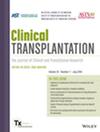Early Post-Transplant Renal Recovery Trajectory and Trajectory Velocity Functions Are Predictors of Estimated GFR at 1 Year: A Functional Data Analysis Approach
Abstract
Introduction
Kidney function at 1-year post-transplant is an indicator of long-term graft function. Using functional data analysis (FDA), we evaluate the relationship between early renal recovery trajectories and kidney function at 1 year.
Methods
We analyzed 1748 adults who underwent deceased-donor kidney transplantation between 2010 and 2021. Renal recovery trajectory functions were derived from longitudinal inverse creatinine values. Functional linear regression models were used to evaluate how well early (<90 days) renal recovery trajectory functions, and their rate of change explained 1-year eGFR. The explanatory power of the functional regression models was compared to results from ordinary least squares models, which used cross-sectional inverse creatinine values and linear slopes. Models were adjusted for age, sex, kidney donor profile index (KDPI), delayed graft function (DGF), race, body mass index (BMI), rejection, diabetes, hypertension, cytomegalovirus (CMV) serostatus risk, index admission length of stay, and immunosuppression agent. The R2 coefficient quantified the 1-year eGFR variation explained by model variables.
Results
Adjusted functional linear models with renal recovery trajectory and trajectory velocity functions as independent variables explained 68% (65, 71), 70% (67, 74), 70% (66, 74), 70% (66, 75), and 73% (69, 79) of the variation in 1-year eGFR by 7, 14, 30, 60, and 90 days, respectively. By comparison, the ordinary least squares linear models explained a maximum of 69% of the variation in 1-year eGFR at 90 days.
Conclusion
Renal recovery patterns captured as continuous functions as early as 14 days are predictive of renal function at 1 year and may enable early personalized care of recipients at increased risk of poor graft function.

 求助内容:
求助内容: 应助结果提醒方式:
应助结果提醒方式:


